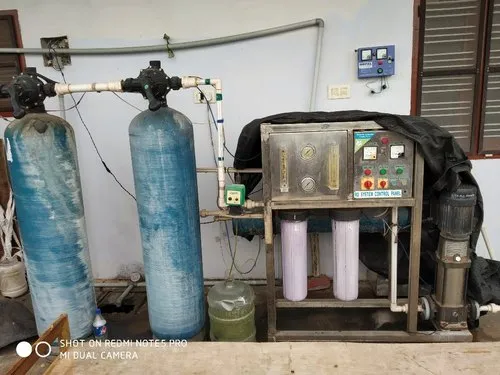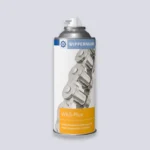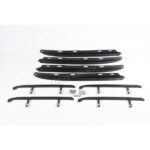Installing an ending plate might not be the most glamorous task in home improvement, but it plays a crucial role in achieving a polished and professional look for your walls. Whether you’re renovating a room or fixing up drywall, understanding how to install an ending plate can save you time and headaches down the road. This step-by-step guide will walk you through everything you need to know— from measuring and cutting to securing that perfect fit. With the right tools and techniques, you’ll be well on your way to creating seamless transitions between surfaces. Let’s dive into this essential skill and transform your space!
What is an Ending Plate?
An ending plate is a key component in drywall installation. It serves as a finishing piece at the end of wall sections or where two walls meet.
Typically made from durable materials like metal or wood, it provides structural support and helps create a clean edge. This ensures that your drywall ends neatly without fraying or damage to the edges.
The primary function of an ending plate is to enhance both stability and appearance. By reinforcing corners and transitions between surfaces, it contributes to the overall integrity of your walls.
Additionally, using an ending plate can aid in preventing cracks over time. Properly installed, it offers long-lasting results for any interior space. Understanding its purpose lays the groundwork for why you should consider adding one during your next renovation project.
Purpose and Benefits of Installing an Ending Plate
An ending plate serves a crucial role in construction and remodeling projects. It acts as a structural support, especially at the ends of walls or where drywall meets another surface. This component ensures stability and integrity, preventing potential sagging or shifting over time.
Another significant benefit is its ability to create a clean, finished look. By covering rough edges or gaps between materials, an ending plate enhances the overall appearance of your space. It provides a seamless transition that elevates any room’s design.
Additionally, using an ending plate can simplify future renovations. Should you decide to change up your layout later on, having this component installed makes it easier to modify walls without extensive repairs needed. The process becomes more efficient with less mess involved.
Installing an ending plate improves sound insulation by minimizing gaps that could allow noise to travel between rooms or spaces.
Tools and Materials Needed
To install an ending plate effectively, you’ll need a set of essential tools and materials. First, gather basic hand tools like a tape measure, utility knife, and drywall saw. These will help you accurately cut the necessary openings.
Next, consider having a level on hand to ensure your ending plate is perfectly aligned. A drill with appropriate bits is also crucial for securing the plate in place.
You’ll require materials such as drywall screws or nails to fasten the ending plate securely within your wall structure. Having joint compound ready can aid in finishing touches after installation.
Don’t forget safety gear like gloves and goggles! They’ll keep you protected while working on this project. With these tools and materials organized beforehand, you’ll be well-prepared for each step ahead.
Step 1: Measure and Mark the Location
Before you dive into the installation of your ending plate, it’s crucial to start with precise measurements. Grab a tape measure and find the exact spot where you want to place the plate.
Once you’ve determined that ideal location, use a pencil to mark both sides of the wall stud. This will create clear guidelines for cutting and installing.
Take your time here; accuracy is key. Double-check your measurements before moving on to ensure everything aligns perfectly later on.
Getting this step right sets a strong foundation for what follows. Remember, small mistakes at this stage can lead to bigger issues down the line!
Step 2: Cut the Drywall
Next, it’s time to cut the drywall. Use a utility knife for precision and ease. Start by scoring along your marked lines gently. You don’t need excessive force; just enough to create a clean groove.
Once you’ve scored the surface, snap the drywall along the line. If it doesn’t break easily, make another pass with your knife. This ensures a tidy edge without jagged pieces.
For corner cuts or more complex shapes, consider using a drywall saw for better maneuverability. Make slow and controlled movements to maintain accuracy throughout.
After cutting out the section, check that there are no rough edges or leftover fragments that could cause issues later on. A smooth cut will help ensure that your ending plate fits snugly when it’s time for installation.
Step 3: Install the Ending Plate
With the drywall cut and your location marked, it’s time to install the ending plate. Carefully position the plate into place against the studs. Ensure that it’s flush with both edges of the drywall.
Use a level to check for alignment. A straight installation is crucial for a neat finish later on. If necessary, adjust as you go along.
Once it’s in position, use screws or nails specifically intended for this purpose. Drive them through the plate and into each stud behind it. Aim for approximately every 12 inches to ensure sturdy support.
Pay attention to any gaps between the ending plate and adjacent materials; these can often be filled later with joint compound for a smooth look. Make sure everything feels secure before moving on to further steps in your project.
Step 4: Secure the Ending Plate in Place
With the ending plate positioned correctly, it’s time to secure it firmly. Use screws specifically designed for drywall installation. These will provide the strength needed to hold everything in place.
Start by driving screws into the ends of the plate where it meets framing members. This is crucial for stability and overall durability. Maintain a consistent spacing of about 12 inches between each screw along the length of the plate.
Make sure not to overdrive the screws; they should sit just below the surface without breaking through. This ensures a smooth finish when you apply joint compound later on.
Once secured, double-check that everything is level and aligned properly. A quick inspection now can save time during finishing touches down the line. You want this part sturdy as it’s essential for maintaining structural integrity in your project.
Step 5: Finish with Joint Compound and Sanding
Once the ending plate is securely in place, it’s time to create a seamless finish. Start with joint compound, which will help hide any imperfections. Apply a thin layer over the edges of the ending plate using a putty knife. This step requires patience to ensure an even distribution.
Focus on feathering out the edges to blend into surrounding drywall. Allow this initial coat to dry completely before proceeding. Drying times can vary based on humidity and temperature, so check for firmness before you move on.
After drying, grab your sanding block or sponge. Lightly sand the area where you applied the joint compound until it feels smooth and level with adjacent surfaces.
Wipe away dust particles with a damp cloth once you’re done sanding. This prepares the surface for additional coats if necessary or for priming and painting later on.
Tips for a Professional-Looking Installation
Achieving a professional-looking installation of an ending plate requires attention to detail. Start by ensuring your tools are clean and in good condition. A sharp utility knife can make all the difference when cutting drywall.
Take extra time to measure twice before making any cuts. Precision is key in avoiding unnecessary errors that could lead to wasted materials.
When applying joint compound, use a wide putty knife for smooth application. Feather the edges carefully so they blend seamlessly with existing surfaces.
Don’t rush the drying process; allow ample time for each layer of compound to set before sanding. This will help create a flawless finish that looks polished and refined.
Consider painting over the area once it’s dry for an even more finished appearance, matching it perfectly with your wall color enhances integration into the space.
fAlternative Methods
When it comes to installing an ending plate, there are alternative methods you might consider. One option is using metal framing instead of traditional wood. Metal provides added durability and resistance to warping over time.
Another approach involves adhesive backing for a quicker installation process. This eliminates the need for screws or nails, making it ideal for smaller projects where speed matters.
For those tackling larger installations, pre-fabricated ending plates can save considerable time on-site. These come ready to install and often include integrated flanges for easier attachment.
Consider integrating your ending plate into a larger wall system design using modular components. This method allows flexibility in layout while ensuring that all elements fit seamlessly together without additional cutting or adjustments.
FAQs
If you’re new to the concept of an ending plate, it’s natural to have questions. Here are some common queries that may help clarify your understanding:
What is an ending plate used for?
An ending plate acts as a structural support at the ends of drywall installations. It helps secure the edges and provides stability.
Do I need special tools to install an ending plate?
Basic tools like a utility knife, measuring tape, screws, and a drill will suffice. Most homeowners should find these items readily available.
Can I install an ending plate myself?
Yes! With careful measurement and attention to detail, most DIY enthusiasts can tackle this project without professional help.
How long does it take to install an ending plate?
The installation process typically takes about one to two hours depending on your experience level and complexity of the project.
Is there any maintenance required after installation?
Once installed correctly, there’s little maintenance needed other than ensuring that no moisture or damage occurs around the area.
Understanding these points can simplify your approach when installing an ending plate in your home improvement projects. If you have more specific inquiries or run into issues during your installation process, don’t hesitate to reach out for additional guidance!






